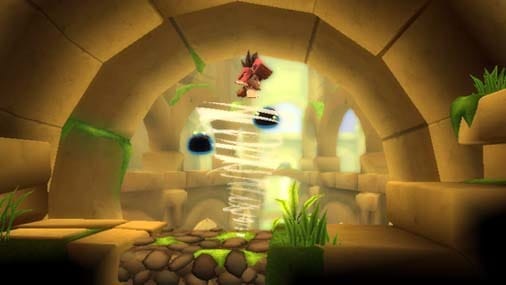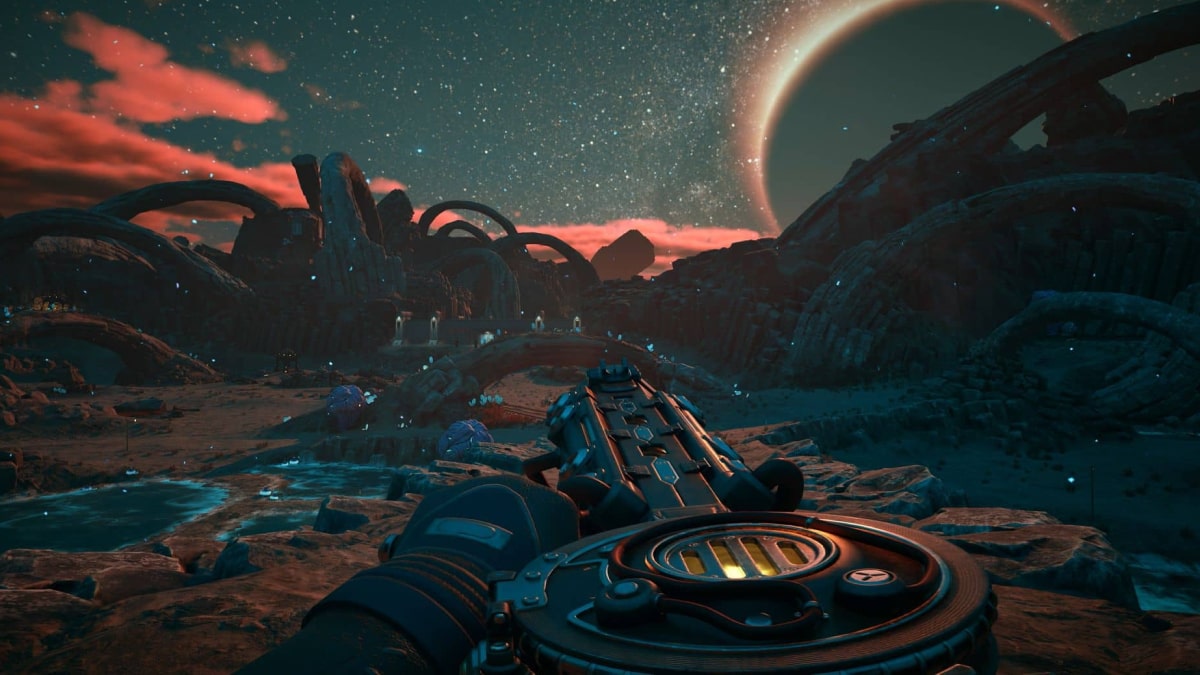You can trust VideoGamer. Our team of gaming experts spend hours testing and reviewing the latest games, to ensure you're reading the most comprehensive guide possible. Rest assured, all imagery and advice is unique and original. Check out how we test and review games here
It’s easy to think of LostWinds: Winter of the Melodias, the sequel to last year’s enchanting WiiWare platform puzzler, as yet another inspired game from UK developer Frontier. It’s spell-bindingly beautiful, packed full of wonderfully designed characters, and has an eerie yet entrancing atmosphere that forces its way under your skin.
But it’s the fact that it improves upon its predecessor in almost every way that makes it a better game than the original. It’s bigger, harder, the puzzles are more challenging and the number of abilities the adorable Toku, LostWinds’ hero, has at his disposal has increased two-fold. Bar a few control problems, Winter of the Melodias is an almost perfect modern day downloadable video game.
LostWinds is powered by air. Young Toku can’t do anything out of the ordinary, but with the help of Enril the Wind Spirit, who is represented on screen as the Wii Remote pointer, he can ride gusts of wind that lift him into the air.
Take jumping, for example: holding the A button and flicking the Wii Remote in the desired direction will cause a gust of wind to lift Toku off of his feet. You’re able to do this three times in a row, with a slight pause in between each, to help our hero reach areas he would never be able to otherwise.
Winter of the Melodias picks things up almost immediately after the end of the first game. Toku and Enril head off in search of his mother Magdi, who has mysteriously disappeared while searching for the ruins of Melodia City. The game begins with a quite stunning opening section that sees Magmok, the giant rock creature and final boss of the first game, help Toku up Summerfalls Mountain. Magmok swings in and out of the background, picking Toku up with his huge hands and lifting him to new heights. It sets the tone perfectly – immediately it’s clear that Winter of the Melodias is a quality title with incredibly high production values for a 1000 Wii Point WiiWare game.
At the mountain summit, Toku finds Summerfalls Village racked by an eternal winter. It’s bitterly cold, and, at this early stage, you’re forced to move from lit torch to lit torch to prevent yourself from freezing to death. Soon, though, you snag a coat that keeps Toku warm. This is your first new ability, one of many that you’ll pick up Metroid style as you unveil more of the game’s innards. Toku eventually discovers a cave full of villagers, as well as his mother. Unfortunately she’s stricken with a mysterious illness that will soon kill her; Toku and Enril then head out in desperate search of a cure, and, along the way, attempt to rid the village of its wintery curse.
As a result of the winter, Toku can perform some new abilities. The Vortex ability from the first game (hold A and draw a small circle) forms a snowball, which can be used to defeat Glorbs, the small blobs from the first game, as well as press down switches and destroy ice barriers.
The game doesn’t properly open up until Sonté, Spirit of Seasons, gifts Toku with the ability to switch the world from winter to summer and back again. Via bear statues, pressing Z transforms the village from an icy, snow-covered freeze-fest into a warm, lush world where birds sing and water runs free. In gameplay terms, it facilitates more complex puzzles than the first game, and many new abilities.
For example, Toku can create a Cyclone by holding down A and B and waggling. At first Cyclones can only lift Toku high into the air, but eventually he can use them to drill down through rock structures, and even absorb water into the air, forming a cloud. This cloud can then be moved with a gust of wind, and forced to rain with a downward gust. In this way, you’re able to transport water from one area to the other.
The more complex puzzles, encountered in the later portion of the game (it took me just over six hours to complete) require elaborate use of all of Toku’s skills. You have to use gusts of wind to guide rocks as well as yourself around expansive levels, burning barriers with fire, pressing switches, transporting water, forming ice platforms and switching seasons, sometimes while under threat from pesky Glorbs.
Other improvements seem a direct response to criticism of the first game. It was often easy to get lost in LostWinds. To combat this, Frontier has introduced a map that shows you exactly where you need to go next. Each level is connected by black lines, so you can quickly and easily identify routes to destinations. It won’t tell you how to access where you need to go next, or how to solve puzzles, so getting stuck is still a distinct possibility. But at least now you know where best to be stuck.
If Winter of the Melodias has a failing, it’s that the more challenging sections can often frustrate. Drawing small and precise circles with the Wii Remote is at times a fiddly, frustratingly imprecise affair that can wear out your wrist. On occasion, Winter of the Melodias can make you feel as if the world is against you, and, when you fall to the bottom of a room having tirelessly worked your way to the top, you really want to smash the Wii Remote not only on the floor, but into your own face.
One perfect example is a puzzle encountered about halfway through the game. Toku is required to earn three gold pieces in order to pay Smith to craft a horn. To earn one, he must get three pieces of fruit into a basket. It sounds simpler than it is. The game’s superb physics ensure the fruit rolls and falls as it should, but the precision required to get the job done without frustration simply isn’t there. It’s all too easy to accidentally push a rock off of a platform with a gust of wind designed only for Toku. These control frustrations only really occur in the latter stages of the game, during which you’re required to carefully move Toku as well as rocks and resonating spheres about expansive levels.
Still, Winter of the Melodias is a beautiful game, and, at times, surprisingly emotional. There are moments Toku shares with his mother that are particularly gut-wrenching. One in particular, experienced later in the game, puts more illustrious moments from fully voice acted triple-A video games to shame. The combination of a superb, Aztek-influenced art style and a wistful score is almost impossible to resist. There are loads of smile-inducing little details: Toku falling asleep by his mother’s side when the controller is left alone; non-player characters yelping as your gusts of wind lift them off of their feet; the well-written, almost tragic scattered pages of Magdi’s journal. All these elements combine to form a single, heartfelt whole. Indeed, the game’s overall aesthetic is so powerful that Winter of the Melodias might well be one of the most beautiful games ever created.

/https://oimg.videogamer.com/images/119c/lostwinds_winter_of_the_melodias_18.jpg)
/https://oimg.videogamer.com/images/13cf/lostwinds_winter_of_the_melodias_10.jpg)
/https://oimg.videogamer.com/images/d4f1/lostwinds_winter_of_the_melodias_15.jpg)






